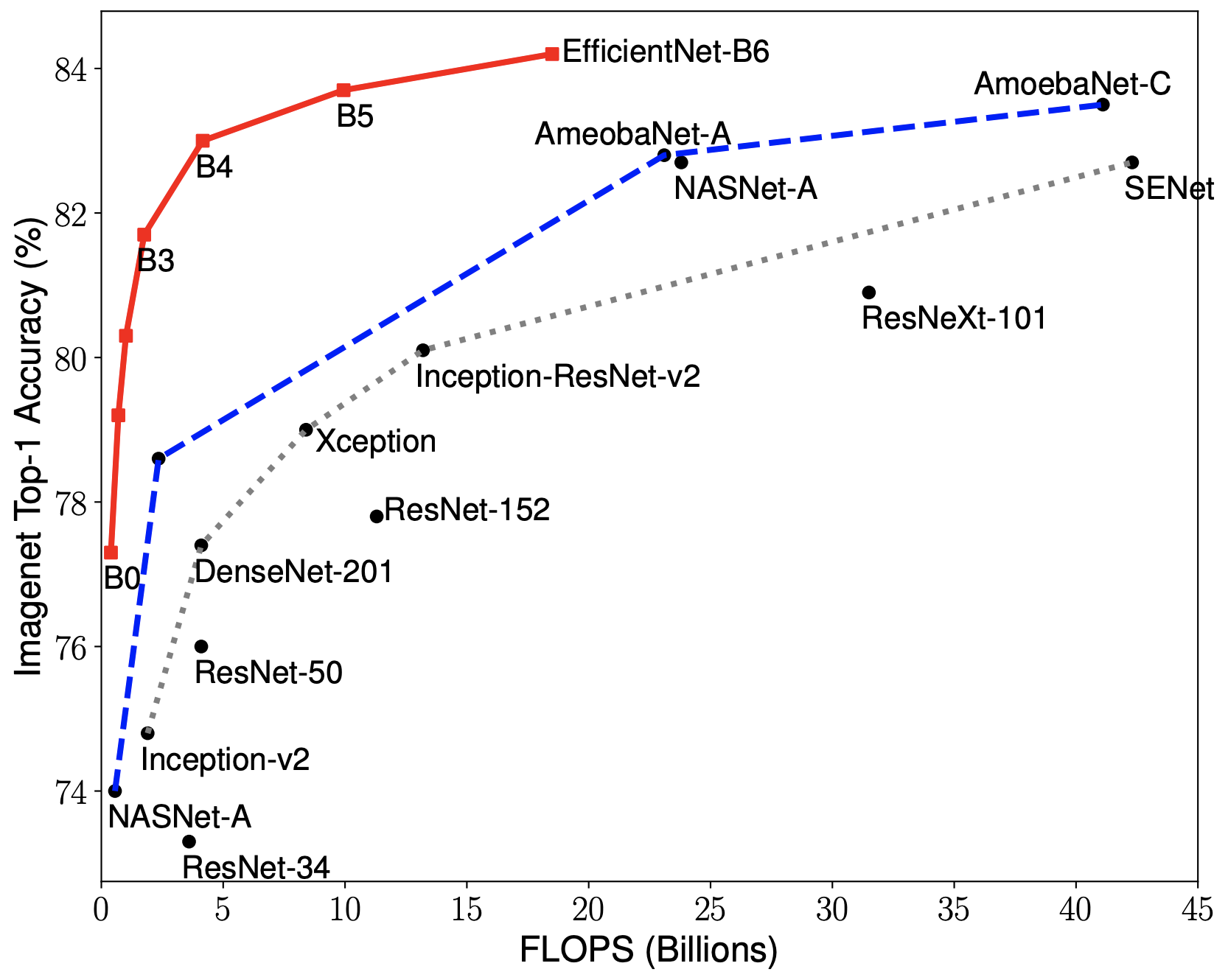This repository contains a Keras reimplementation of EfficientNet, a lightweight convolutional neural network architecture achieving the state-of-the-art accuracy with an order of magnitude fewer parameters and FLOPS, on both ImageNet and five other commonly used transfer learning datasets.
The codebase is heavily inspired by the TensorFlow implementation.
EfficientNets rely on AutoML and compound scaling to achieve superior performance without compromising resource efficiency. The AutoML Mobile framework has helped develop a mobile-size baseline network, EfficientNet-B0, which is then improved by the compound scaling method to obtain EfficientNet-B1 to B7.

|

|
EfficientNets achieve state-of-the-art accuracy on ImageNet with an order of magnitude better efficiency:
-
In high-accuracy regime, EfficientNet-B7 achieves the state-of-the-art 84.4% top-1 / 97.1% top-5 accuracy on ImageNet with 66M parameters and 37B FLOPS. At the same time, the model is 8.4x smaller and 6.1x faster on CPU inference than the former leader, Gpipe.
-
In middle-accuracy regime, EfficientNet-B1 is 7.6x smaller and 5.7x faster on CPU inference than ResNet-152, with similar ImageNet accuracy.
-
Compared to the widely used ResNet-50, EfficientNet-B4 improves the top-1 accuracy from 76.3% of ResNet-50 to 82.6% (+6.3%), under similar FLOPS constraints.
- Initializing the model:
from efficientnet import EfficientNetB0
model = EfficientNetB0(weights='imagenet')- Loading the pre-trained weights:
from efficientnet import load_model
model = load_model('path/to/model.h5')See the complete example of loading the model and making an inference in the Jupyter notebook here.
The performance of each model variant using the pre-trained weights converted from checkpoints provided by the authors is as follows:
| Architecture | @top1* | @top5* | Weights |
|---|---|---|---|
| EfficientNetB0 | 0.7668 | 0.9312 | + |
| EfficientNetB1 | 0.7863 | 0.9418 | + |
| EfficientNetB2 | 0.7968 | 0.9475 | + |
| EfficientNetB3 | 0.8083 | 0.9531 | + |
| EfficientNetB4 | 0.8259 | 0.9612 | + |
| EfficientNetB5 | 0.8309 | 0.9646 | + |
| EfficientNetB6 | - | - | - |
| EfficientNetB7 | - | - | - |
* - topK accuracy score for converted models (imagenet val set)
keras >= 2.2.0+tensorflowscikit-image
pip install -U git+https://github.com/qubvel/efficientnetpip install -U efficientnet- How can I convert the original TensorFlow checkpoints to Keras HDF5?
Pick the target directory (like dist) and run the converter script from the repo directory as follows:
./scripts/convert_efficientnet.sh --target_dir distYou can also optionally create the virtual environment with all the dependencies installed by adding --make_venv=true and operate in a self-destructing temporary location instead of the target directory by setting --tmp_working_dir=true.
- Why are B6 and B7 model variants not yet supported?
Weights for B6-B7 have not been made available yet, but might appear soon. Follow the issue for updates.